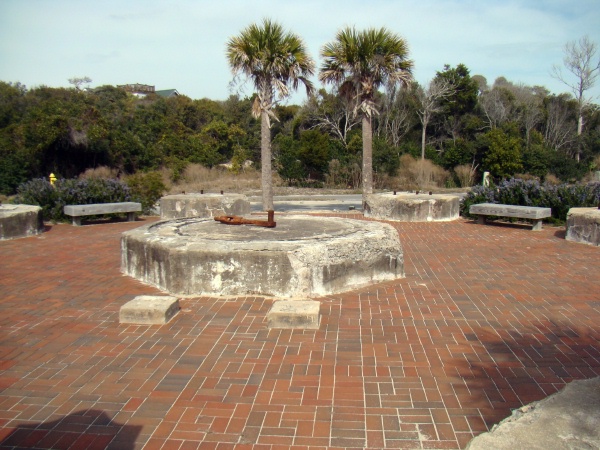Stan and I drove to St. Mary’s, GA to stay with family for a few days. We’d hoped to get some pics of Cape Canaveral Lighthouse when we drove to Kennedy Space Center on February 27th, but all guided tours were sold out by the time we arrived at 10:30 AM. This is the second year we’ve been thwarted in an attempt to photograph that lighthouse, but the hope is that we’ll get a chance next year by booking tickets in advance via the internet. Last year the lantern room was being refurbished so not being able to see it then was not a disappointment; this year it was.
We left Georgia on Saturday, March 1st and drove to North Myrtle Beach, SC. On Sunday, March 2nd we drove to Charleston, SC to find St. Philip’s Episcopal Church where the Fort Sumter Range Rear Light was placed in the steeple in the heart of Charleston–a fixed white light 140 feet in height. Established in 1855, the rear light in the church steeple was deactivated in 1915.
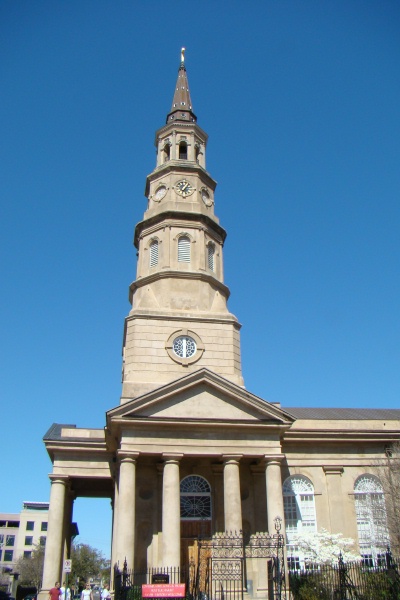
The front range light was a white framework structure placed on Fort Sumter's wall. It was 51 feet above the high water line and was a 5th order fixed white light.
The range line marked by these lights [Fort Sumter (front) & St. Philip's Church (rear)] guided ships from the Charleston Light Vessel through the main channel dredged between the stone jetties constructed for the improvement of Charleston Harbor.
The front range light was destroyed during 1893 hurricane and rebuilt; it remained in service until the station was disestablished in 1950. The National Park Service requested that the Coast Guard remove the radio beacon at Fort Sumter so they could erect a new monument. The radio beacon was moved to Sullivan's Island Lifeboat Station At some point in the next few years the light was extinguished and was replaced by daymarkers.
The picture shown below is of the island where Fort Sumter stood. The island was constructed with a foundation of 70,000 tons of granite and other rock. Contractors from as far away as New York and the Boston, MA area delivered this material by ship and dumped it on a shoal in Charleston Harbor for over a decade. The Fort Sumter National Monument was photographed from a vantage point within the present-day Fort Moultrie located on Sullivan’s Island in South Carolina.
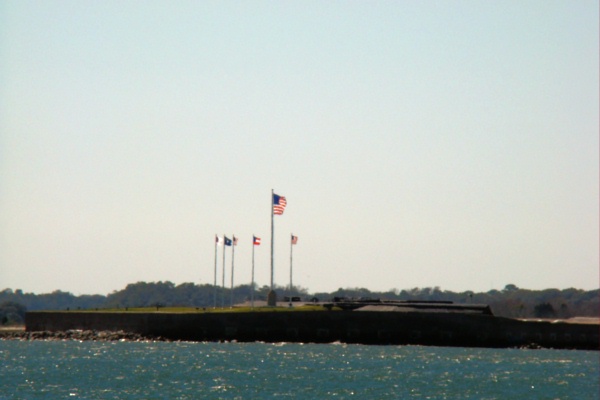
On Monday, Stan played golf and I laid out a plan for lighthousing for Tuesday and scheduled a boat trip for us to take on Wednesday.
The first stop on Tuesday, 3/04/08, was to photograph Governor’s Lighthouse (a/k/a Coquina Harbor and Myrtle Beach Yacht Club Light), a 50' tall faux light built in 1985 to honor the past Governors of South Carolina. Its daymark is a striking black and white horizontal banded tower with a fixed white light.
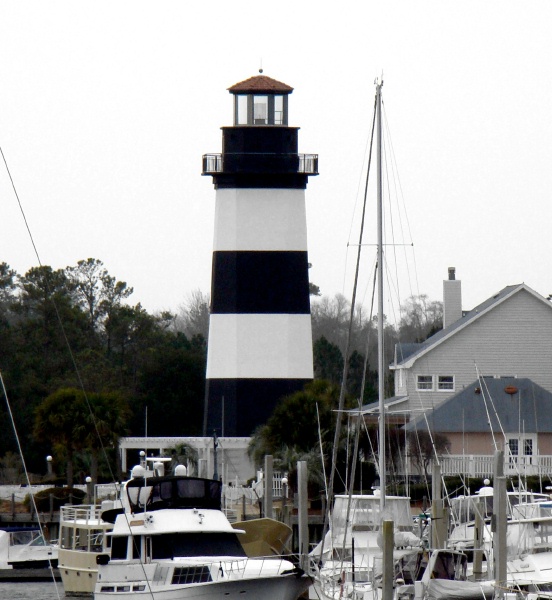
Next was a ferry trip to Bald Head Island, NC and rental of a golf cart (so you expected some other mode of transportation with someone whose passion is golf?).
First was Bald Head Island (Old Baldy) Light. The grounds/dwelling/tower were closed, but we were able to take numerous photographs. Bald Head Lighthouse is the oldest in NC (1817) and is an octagonal brick and plaster tower that stands 90' high. The lantern room is offset from the center of the tower and originally had an array of lamps and reflectors for illumination. It later housed a Fresnel lens which was removed from the tower in 1935 when it was decommissioned.
The mottled look of the tower is the result of patchwork repairs over the years--plans to resurface the tower in one color was met with public outcry.
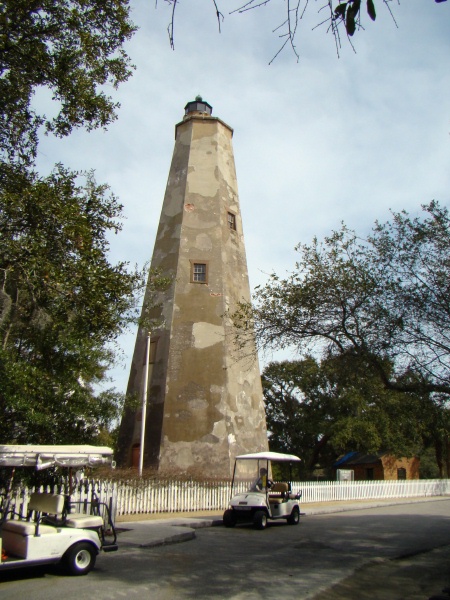
The next stop was at the remains of the Cape Fear Light–built to replace Bald Head Light which was deemed unsatisfactory at marking Frying Pan Shoals. The 150' tall iron skeleton tower had a revolving 1st-Order Fresnel lens which was first lit in June of 1903. When the Cape Fear Lighthouse was established, the old Cape Fear Station light was changed from a 4th-order flashing light with intervals of 30 seconds to a fixed, 4th-order light and its name was changed to Bald Head Light Station. Discontinued in 1958 when Oak Island Lighthouse became operational, Cape Fear Lighthouse was demolished. Portions of the support columns were cut away and dynamite charges were used to bring the tower down.
The concrete blocks that anchored the eight support legs in an octagonal pattern are shown here. The concrete block in the center supported the spiral staircase and the smaller blocks south of the central one are thought to have served as a foundation for the entrance to the tower.
The tower’s red brick generator room and three keeper’s dwellings are preserved and the latter are available as rental properties.
